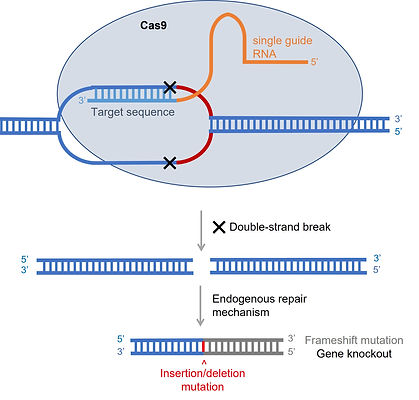Mechanisms of Ionoregulation
The study of ionoregulation by seawater and freshwater fishes has a long history in comparative physiology. Our collective understanding of the molecular mechanisms of ion transport pathways has been shaped dramatically by loss-of-function experiments employing pharmacological blockers and gene manipulation techniques. In particular, CRISPR/Cas9 gene editing can be used to test and validate current mechanistic models and to determine the limits of plasticity of these physiological systems. Our lab will employ gene knockouts in the euryhaline mummichog (Fundulus heteroclitus) to address knowledge gaps in our current understanding of euryhaline osmo and ionoregulation in this important model species.

CRISPR/Cas9 gene editing mechanism
Adapted from Zimmer et al. (2017) J Exp Biol 222, jeb175737
Main Research Questions
1) How does knockout of "seawater" or "freshwater" isoforms of Na/K-ATPase influence salinity tolerance?
2) Which pathways for Na uptake allow mummichog to acclimate to dilute fresh water?
3) How does the loss of the Na-Cl-cotransporter (NCC) in a species lacking active Cl uptake influence freshwater osmo and ionoregulation?
